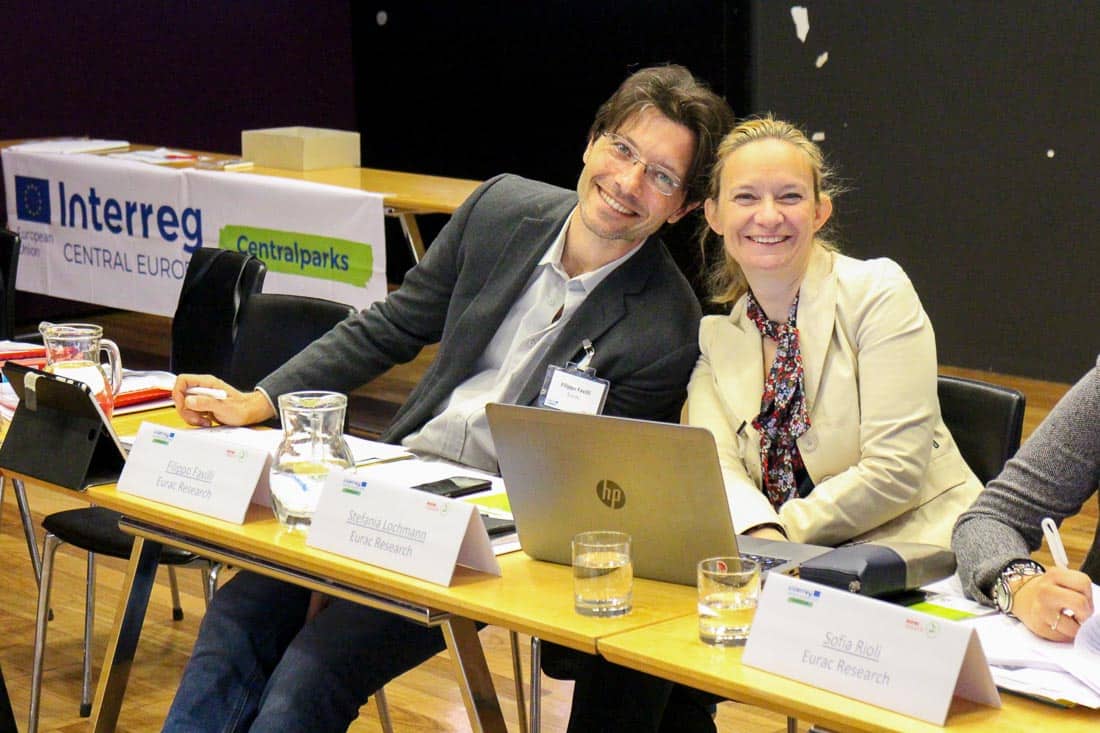On 2nd-3rd of March 2022, the Centralparks team had the chance to meet again in-person as well as online to evaluate the work done and prepare plans for the last month ahead. The partner meeting took place in the beautiful scenery of the town of Strážnice in the White Carpathians with online connection for partners joining remotely. The meeting was organised by the Czech partner Education and Information Centre Bilé Karpaty.
Project finalisation phase
On the 1st of April 2022, the Centralparks project will celebrate its 3-year birthday, and with it the end of the project. The month of March will be an important month for the partnership, with several milestones ahead. The two days spent jointly in the Czech Carpathians provided a good platform for partners to review the status quo of each work package, activities finalised and the last tasks ahead, including the final conference of the project.
With project activities finalised, it is worth to keep an eye on the project achievements, which is being continuously updated.
Project outcomes will be presented to the wider public on the 23-24th of March 2022, during the Centralparks Final Conference. The conference titled “Transnational cooperation for the sustainable future of the Carpathian region” will gather Carpathian experts to discuss the contribution of the Centralparks results to the sustainable future of the Carpathians and beyond.
Exploring links between landscape and cultural diversity in the White Carpathians
Fruitful discussions continued beyond the meeting room, as team members were taken on a journey through the landscape and cultural diversity of the Moravian Carpathians.
Cultural diversity of the Moravian Carpathians expressed in folk costumes
The participants of the meeting were guided through an exhibition of traditional folk costumes by Zlata Potyková from the National Institute of Folk Culture. This exhibition is located in the castle of Strážnice and displays models of folk costumes from a range of ethnographic regions in the Czech Republic. Ms Potyková not only described the different parts of the costumes, but also explained their development, functional use and symbolic significance. She pointed to the fact that folk costume diversity also reflects the natural conditions of each region, particularly in terms of material utilisation and farming methods in the countryside. Therefore, folk costumes as well as other elements of traditional folk culture interact with each other and also affect biological diversity.
Ecosystem services lesson
Based on the initiative of students of environment-oriented secondary schools and participants of round-table discussions of stakeholders of the Carpathians Convention, partners could experience first hand the ecosystem services lesson, which was compiled under the 3rd Thematic Work Package, developed by the colleagues of the Education and Information Centre Bílé Karpaty. The lesson targeting students between 14-18 is aimed to improve student cooperation while integrating elements of field research teaching as well as modern digital technologies.
Folk architecture as a reflection of the landscape
Similar to folk costumes, also folk architecture is a reflection of the natural conditions of a region. Examples of folk architecture from the region of south-east Moravia are presented in the open-air museum of Strážnice, where Ms. Potyková guided the participants. She introduced them to the different ethnographic regions and described the construction and utilisation of particular buildings. Karel Fajmon (Nature Conservation Agency of the Czech republic) completed the ethnographic interpretation by explaining the connection between diversity in folk architecture and differences in natural conditions. For example the use of local building materials (stone, timber, clay, straw) and the arrangement of buildings and land parcels in the landscape influence the scenery, farming methods and also have an impact on biodiversity.


























